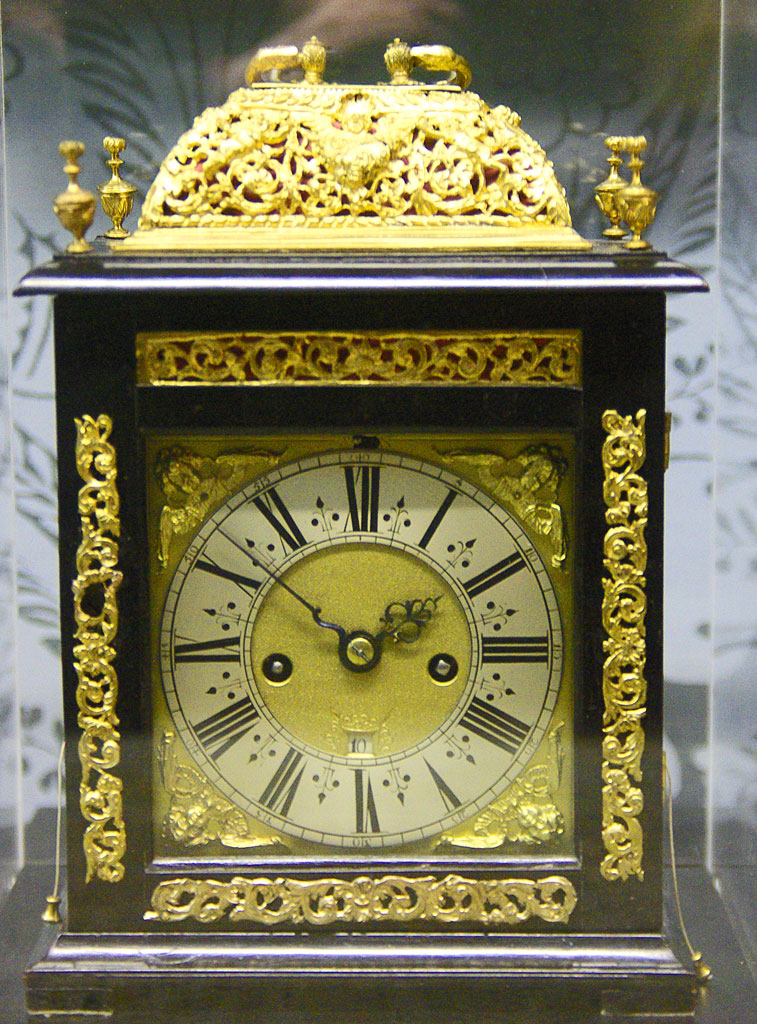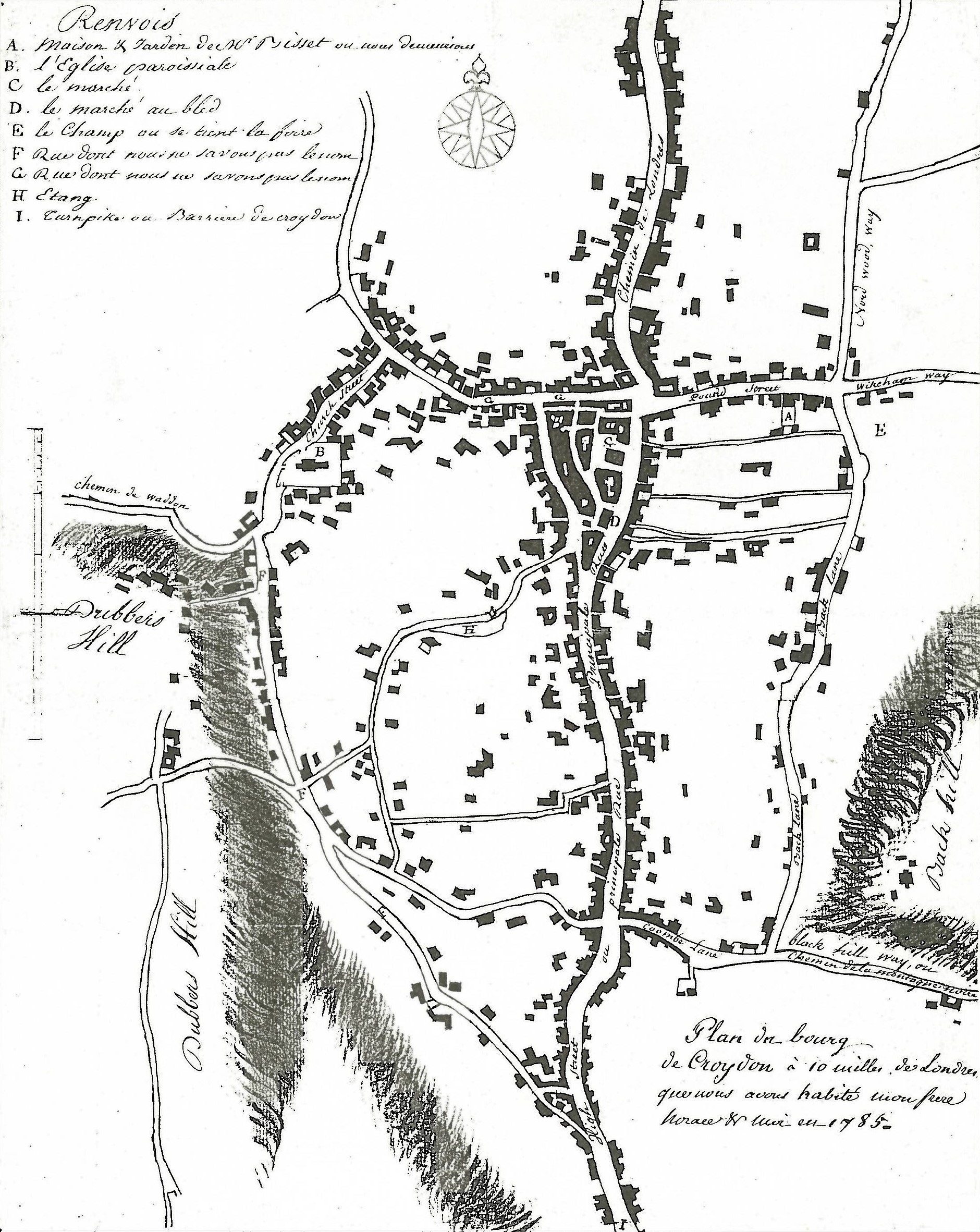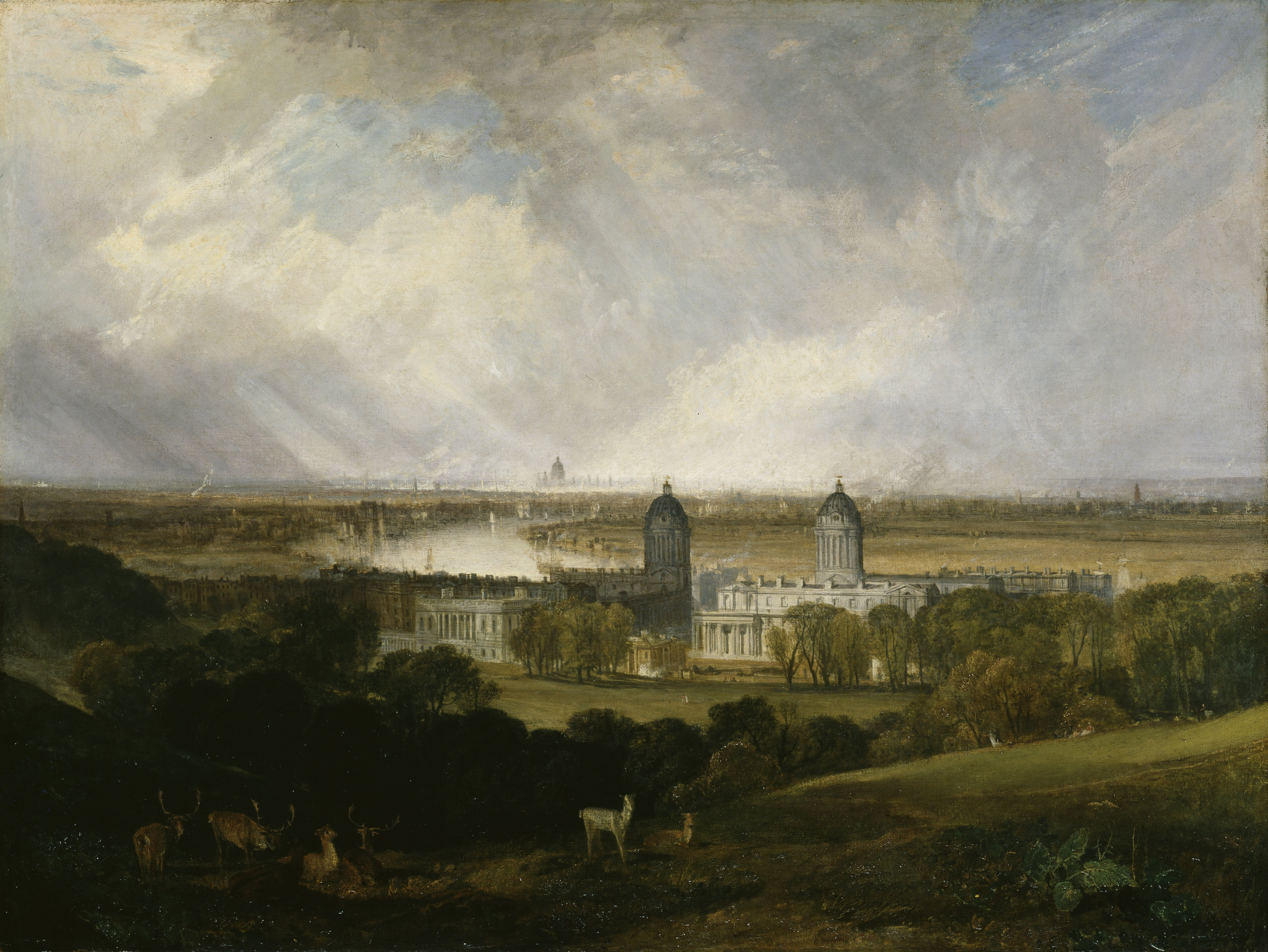|
Daniel Quare
Daniel Quare (1648 or 1649 – 21 March 1724) was an English clockmaker and instrument maker who invented a repeating watch movement in 1680 and a portable barometer in 1695. Early life Daniel Quare's origins are obscure. He was possibly a native of Somerset, and is believed to have been born in 1648 or 1649. Nothing is known of his parentage, although he is presumed to have come from a strict Quaker family. No record has been traced of his apprenticeship. Career On 3 April 1671 he was admitted a brother of the Clockmakers' Company. One of the early members of the Friends' (Quakers') meeting at Devonshire House, Bishopsgate, he married there, on 18 April 1676, Mary, daughter of Jeremiah Stevens, maltster, of High Wycombe, Buckinghamshire. In the register-book he is described as "clockmaker, of Martins-le-Grand in the liberty of Westminster". Soon afterwards, Quare moved to the parish of St Anne and St Agnes within Aldersgate, where in 1678, for refusing to pay a rate for ... [...More Info...] [...Related Items...] OR: [Wikipedia] [Google] [Baidu] |
Somerset
Somerset ( , ), Archaism, archaically Somersetshire ( , , ) is a Ceremonial counties of England, ceremonial county in South West England. It is bordered by the Bristol Channel, Gloucestershire, and Bristol to the north, Wiltshire to the east, Dorset to the south-east, and Devon to the south-west. The largest settlement is the city of Bath, Somerset, Bath, and the county town is Taunton. Somerset is a predominantly rural county, especially to the south and west, with an area of and a population of 965,424. After Bath (101,557), the largest settlements are Weston-super-Mare (82,418), Taunton (60,479), and Yeovil (49,698). Wells, Somerset, Wells (12,000) is a city, the second-smallest by population in England. For Local government in England, local government purposes the county comprises three Unitary authorities of England, unitary authority areas: Bath and North East Somerset, North Somerset, and Somerset Council, Somerset. Bath and North East Somerset Council is a member of ... [...More Info...] [...Related Items...] OR: [Wikipedia] [Google] [Baidu] |
William III Of England
William III (William Henry; ; 4 November 1650 – 8 March 1702), also known as William of Orange, was the sovereign Prince of Orange from birth, Stadtholder of County of Holland, Holland, County of Zeeland, Zeeland, Lordship of Utrecht, Utrecht, Guelders, and Lordship of Overijssel, Overijssel in the Dutch Republic from 1672, and List of English monarchs, King of England, Monarchy of Ireland, Ireland, and List of Scottish monarchs, Scotland from 1689 until his death in 1702. He ruled Great Britain and Ireland with his wife, Queen Mary II, and their joint reign is known as that of William and Mary. William was the only child of William II, Prince of Orange, and Mary, Princess Royal and Princess of Orange, Mary, Princess Royal, the daughter of King Charles I of England, Scotland, and Ireland. His father died a week before his birth, making William III the prince of Orange from birth. In 1677, he Cousin marriage, married his first cousin Mary, the elder daughter of his maternal u ... [...More Info...] [...Related Items...] OR: [Wikipedia] [Google] [Baidu] |
St Dionis Backchurch
St Dionis Backchurch was a parish church in the Langbourn ward of the City of London. Of medieval origin, it was rebuilt after the Great Fire of London to the designs of Christopher Wren and demolished in 1878. Early history The church of St Dionis was dedicated to Dionysus the Areopagite. The name Backchurch could have come from its standing behind other buildings, or from its position relative to the church of St Gabriel Fenchurch. It was in existence by the year 1288, when Reginald de Standen was recorded as being the rector. In 1466 the Alderman John Darby had an aisle added, in which he was buried. The patronage of the church once belonged to the prior and canons of Christchurch, Canterbury and later passed to the dean and chapter of Canterbury Cathedral. Rebuilding after the Great Fire The church was destroyed in the Great Fire of London in 1666, and rebuilt to the designs of Christopher Wren in 1674 at a cost of £5,737. A tower, also to Wren's design, was added ten y ... [...More Info...] [...Related Items...] OR: [Wikipedia] [Google] [Baidu] |
Quaker Gardens, Islington
Quaker Gardens is a small public garden in the extreme south of the London Borough of Islington, close to the boundary with the City of London, in the area known historically as Bunhill Fields. It is managed by Islington Borough Council. It comprises the surviving fragment of a former burying ground for Quakers (members of the Religious Society of Friends), in use from 1661 to 1855. George Fox (d. 1691), one of the founders of the movement, was among those buried here. The gardens lie to the west of Bunhill Row, to the south of Banner Street, and to the north of Chequer Street, and can be entered from either Banner Street or Chequer Street. In addition to the public garden, the site includes a children's playground and a tarmac ball court with basketball hoops. A Quaker meeting house, the last remaining part of the former Bunhill Memorial Buildings, stands at the north-west corner of the gardens. History The site lies in the area known historically as Bunhill Fields. The na ... [...More Info...] [...Related Items...] OR: [Wikipedia] [Google] [Baidu] |
Croydon
Croydon is a large town in South London, England, south of Charing Cross. Part of the London Borough of Croydon, a Districts of England, local government district of Greater London; it is one of the largest commercial districts in Greater London, with an extensive shopping area. The entire town had a population of 192,064 as of 2011, whilst the wider borough had a population of 384,837. Historically an ancient parish in the Wallington Hundred of Surrey, at the time of the Norman conquest of England Croydon had a church, a mill, and around 365 inhabitants, as recorded in the Domesday Book of 1086. Croydon expanded in the Middle Ages as a market town and a centre for charcoal production, leather tanning and brewing, with the brewing industry in particular remaining strong for hundreds of years. The Surrey Iron Railway from Croydon to Wandsworth opened in 1803 and was an early public railway. Later 19th century railway building facilitated Croydon's growth as a commuter town for L ... [...More Info...] [...Related Items...] OR: [Wikipedia] [Google] [Baidu] |
Greenwich Hospital, London
Greenwich Hospital was a permanent home for retired sailors of the Royal Navy, which operated from 1692 to 1869. Its buildings, initially Greenwich Palace, in Greenwich, London, were later used by the Royal Naval College, Greenwich and the University of Greenwich, and are now known as the Old Royal Naval College. The word "hospital" was used in its original sense of a place providing hospitality for those in need of it, and did not refer to medical care, although the buildings included an infirmary which, after Greenwich Hospital closed, operated as Dreadnought Seaman's Hospital until 1986. The foundation which operated the hospital still exists, for the benefit of former Royal Navy personnel and their dependants. It now provides sheltered housing on other sites. History The hospital was created as the Royal Hospital for Seamen at Greenwich on the instructions of Mary II of England, Queen Mary II, who had been inspired by the sight of wounded sailors returning from the Battles ... [...More Info...] [...Related Items...] OR: [Wikipedia] [Google] [Baidu] |
Benjamin Lewis Vulliamy
Benjamin Lewis Vulliamy (25 January 1780 – 8 January 1854) was a clockmaker, active in 18th and 19th century Britain. He succeeded his father Benjamin Vulliamy as head of the firm and Clockmaker to the Crown. Biography The family was of Swiss origin. Justin Vulliamy, an ancestor, coming to England in 1704 to study the construction of English clocks and watches, under one Benjamin Gray, finally succeeded to his master's business at 68 Pall Mall, after having married his daughter. The old shop was situated at 52 Pall Mall, (where the Marlborough Club stood from 1868 until 1953) The firm obtained the appointment of Clockmakers to the Crown in 1742, which it held for 112 years. Justin Vulliamy died in 1797, the business being inherited by his son Benjamin (Benjamin Lewis's father). Benjamin Lewis commenced early to make a special study of the history, theory and applications of horology; but while his father had always specialised in mantel clocks, he began to concentrate o ... [...More Info...] [...Related Items...] OR: [Wikipedia] [Google] [Baidu] |
Hampton Court Palace
Hampton Court Palace is a Listed building, Grade I listed royal palace in the London Borough of Richmond upon Thames, southwest and upstream of central London on the River Thames. Opened to the public, the palace is managed by Historic Royal Palaces, a charity set up to preserve several unoccupied royal properties. The building of the palace began in 1514 for Cardinal Thomas Wolsey, Archbishop of York and the chief minister of Henry VIII. In 1529, as Wolsey fell from favour, the cardinal gave the palace to the king to try to save his own life, which he knew was now in grave danger due to Henry VIII's deepening frustration and anger. The palace went on to become one of Henry's most favoured residences; soon after acquiring the property, he arranged for it to be enlarged so it could accommodate his sizeable retinue of Courtier, courtiers. In the early 1690s, William III of England, William III's massive rebuilding and expansion work, which was intended to rival the Palace of V ... [...More Info...] [...Related Items...] OR: [Wikipedia] [Google] [Baidu] |
Edward Booth (priest)
Edward Barlow, alias Booth (1639–1719), was an English priest and mechanician. Life Barlow was the son of Edward Booth, of Warrington, in Lancashire, where he was baptised 15 December 1639. He took the name of Barlow from his uncle, Father Ambrose Barlow, the Benedictine monk, who suffered martyrdom on account of his priestly character. At the age of twenty he entered the English College at Lisbon (1659), and after being ordained a priest he was sent on the English mission. He first resided with Lord Langdale in Yorkshire, and afterwards removed to Parkhall, in Lancashire, a seat belonging to Mr. Houghton, but his chief employment was attending the poor in the neighbourhood, "to whom he conformed himself both in dress and diet." He died in 1719 at the age of eighty. Dodd, the church historian, who was personally acquainted with Barlow, observes that:he was master of the Latin and Greek languages, and had a competent knowledge of the Hebrew before he went abroad, and 'tis thou ... [...More Info...] [...Related Items...] OR: [Wikipedia] [Google] [Baidu] |
Christiaan Huygens
Christiaan Huygens, Halen, Lord of Zeelhem, ( , ; ; also spelled Huyghens; ; 14 April 1629 – 8 July 1695) was a Dutch mathematician, physicist, engineer, astronomer, and inventor who is regarded as a key figure in the Scientific Revolution. In physics, Huygens made seminal contributions to optics and mechanics, while as an astronomer he studied the rings of Saturn and discovered its largest moon, Titan (moon), Titan. As an engineer and inventor, he improved the design of telescopes and invented the pendulum clock, the most accurate timekeeper for almost 300 years. A talented mathematician and physicist, his works contain the first idealization of a physical problem by a set of Mathematical model, mathematical parameters, and the first mathematical and mechanistic explanation of an unobservable physical phenomenon.Dijksterhuis, F.J. (2008) Stevin, Huygens and the Dutch republic. ''Nieuw archief voor wiskunde'', ''5'', pp. 100–10/ref> Huygens first identified the correct la ... [...More Info...] [...Related Items...] OR: [Wikipedia] [Google] [Baidu] |
Fusee (horology)
A fusee (from the French ''fusée'', wire wound around a spindle) is a cone (geometry), cone-shaped pulley with a helical groove around it, wound with a cord or chain attached to the mainspring Barrel (horology), barrel of antique mechanical watches and clocks. It was used from the 15th century to the early 20th century to improve timekeeping by equalizing the uneven pull of the mainspring as it ran down. The watch and clock historian Granville Hugh Baillie stated of the fusee, "Perhaps no problem in mechanics has ever been solved so simply and so perfectly." History The origin of the fusee is not known. Many sources erroneously credit clockmaker Jacob Zech of Prague with inventing it around 1525. The earliest definitely dated fusee clock was made by Zech in 1525, but the fusee actually appeared earlier, with the first spring driven clocks in the 15th century., p.127-128, p.121 The idea probably did not originate with clockmakers, since the earliest known example is in a cross ... [...More Info...] [...Related Items...] OR: [Wikipedia] [Google] [Baidu] |
Robert Hooke
Robert Hooke (; 18 July 16353 March 1703) was an English polymath who was active as a physicist ("natural philosopher"), astronomer, geologist, meteorologist, and architect. He is credited as one of the first scientists to investigate living things at microscopic scale in 1665, using a compound microscope that he designed. Hooke was an impoverished scientific inquirer in young adulthood who went on to become one of the most important scientists of his time. After the Great Fire of London in 1666, Hooke (as a surveyor and architect) attained wealth and esteem by performing more than half of the Boundary (real estate), property line surveys and assisting with the city's rapid reconstruction. Often vilified by writers in the centuries after his death, his reputation was restored at the end of the twentieth century and he has been called "England's Leonardo da Vinci, Leonardo [da Vinci]". Hooke was a Fellow of the Royal Society and from 1662, he was its first Curator of Experimen ... [...More Info...] [...Related Items...] OR: [Wikipedia] [Google] [Baidu] |








